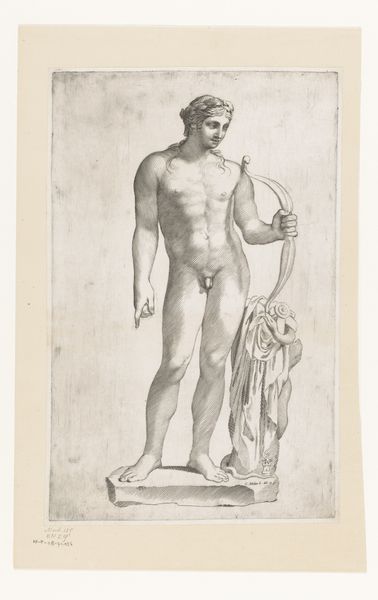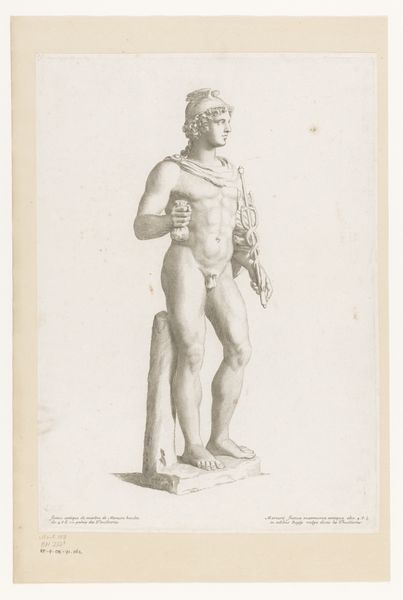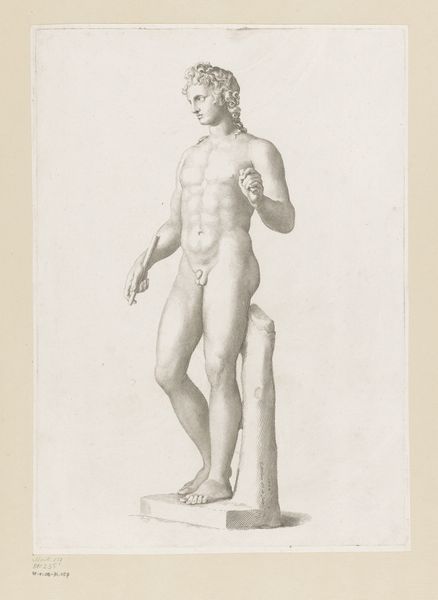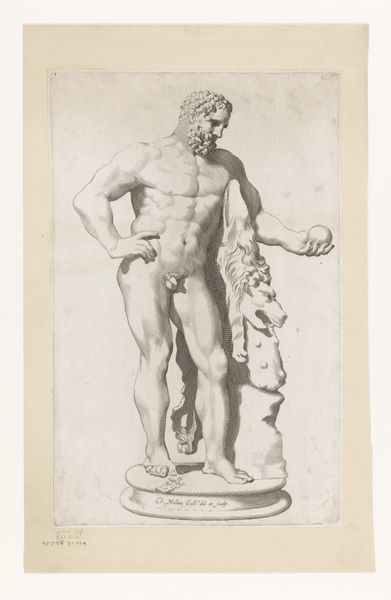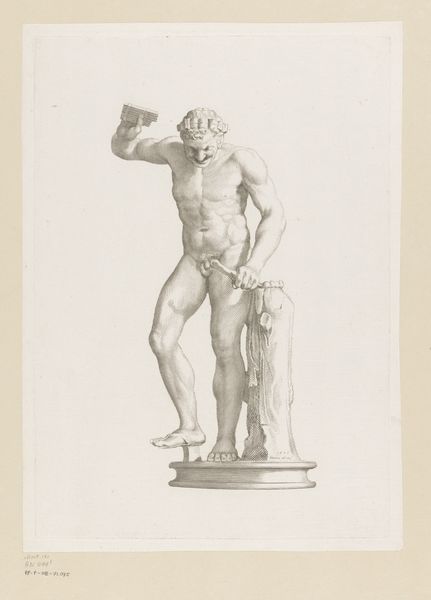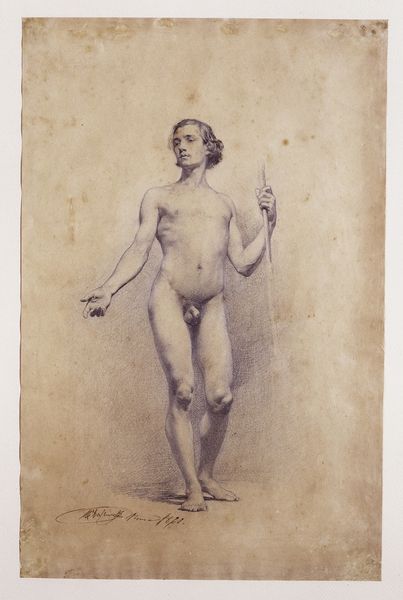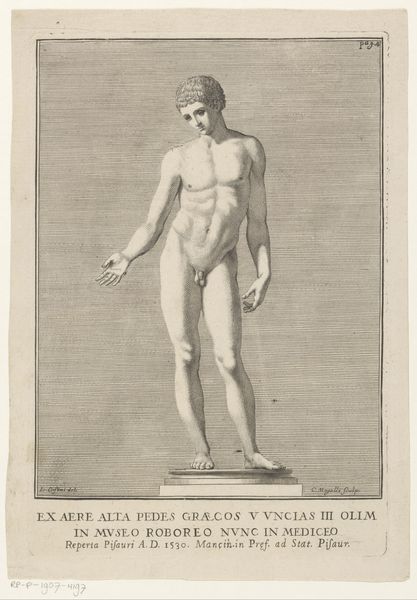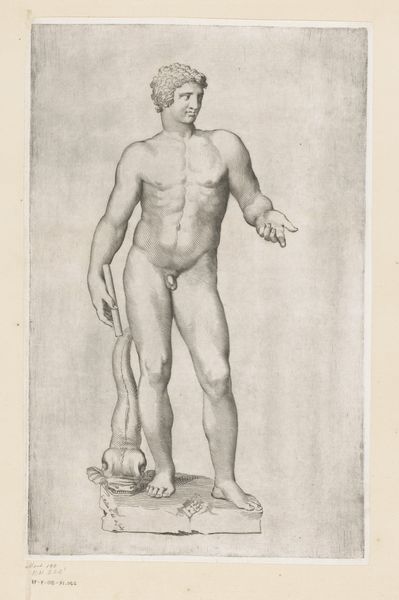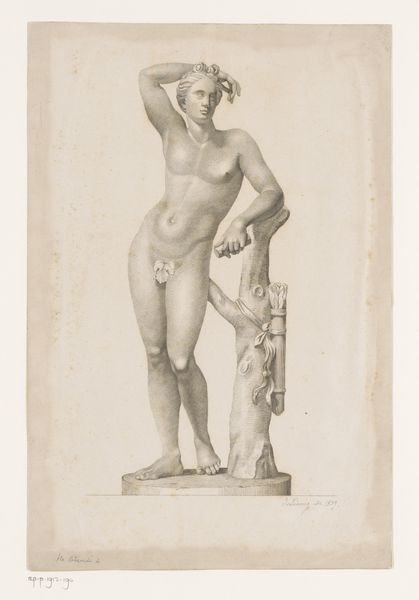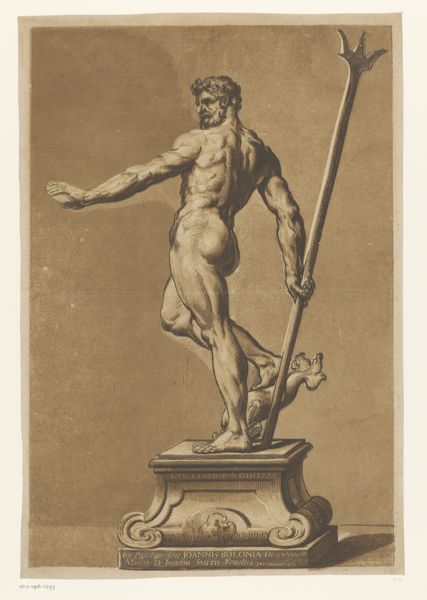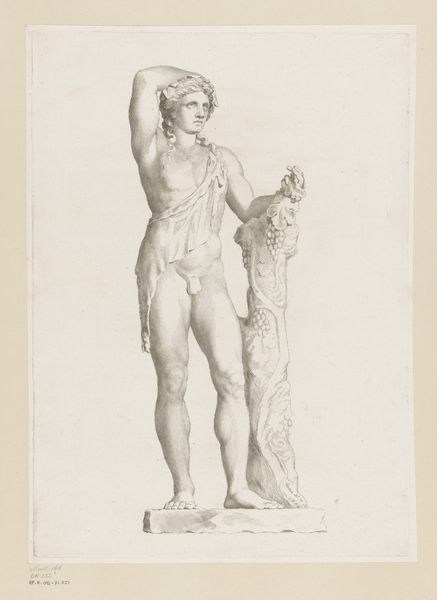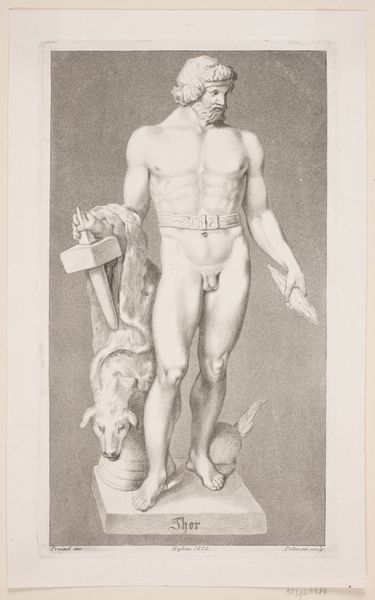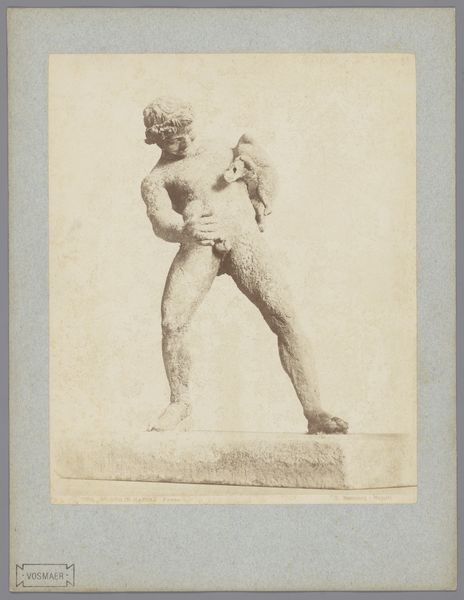
drawing, pencil
#
portrait
#
pencil drawn
#
drawing
#
baroque
#
pencil sketch
#
classical-realism
#
charcoal drawing
#
figuration
#
pencil drawing
#
pencil
#
portrait drawing
#
pencil work
#
academic-art
#
nude
Dimensions: height 373 mm, width 235 mm
Copyright: Rijks Museum: Open Domain
Editor: So this is Claude Mellan’s “Statue of Apollo,” created between 1631 and 1637. It’s a pencil drawing, currently at the Rijksmuseum. It looks almost like a photographic negative with its grayscale and precise lines. I'm curious—how do you interpret this work, especially given its subject? Curator: This image pulsates with symbolic energy. Apollo, the god of light, music, and healing, is rarely depicted without intention. The lyre he leans upon, entwined with a serpent, speaks volumes. Do you recognize the symbolism at play? Editor: I suppose the lyre is obvious – music and art? The snake maybe medicine since it is associated with the Rod of Asclepius? Curator: Precisely! The serpent represents healing and regeneration – a powerful symbol associated with Asclepius, Apollo's son. Note how Mellan has presented the figure in the 'contrapposto' stance. Can you unpack what that compositional choice means in this symbolic tableau? Editor: Ah, yes! It's meant to show Apollo in a relaxed and naturalistic manner. And since we read left to right it puts the active symbols on the right, giving prominence to medicine and healing. Curator: Exactly, drawing upon a familiar visual language to project those symbolic aspects most prominently for a European audience. But observe also the deliberate gaze of Apollo – averted, perhaps lost in thought. Mellan gives us a multi-layered narrative, blending divine beauty with a hint of contemplative introspection, fitting with both the classical fascination with idealized human forms and Baroque drama and contrast. Editor: I hadn’t considered the averted gaze! I was mostly paying attention to the traditional symbols of art and healing, but its that subtle visual psychology which is doing so much of the work. Curator: Indeed! It's these layers of meaning, woven into the very fabric of the image, that render the work a fascinating case study in cultural memory and artistic intention. The artist clearly expected contemporary audiences to understand the many levels of visual and cultural information presented.
Comments
No comments
Be the first to comment and join the conversation on the ultimate creative platform.
